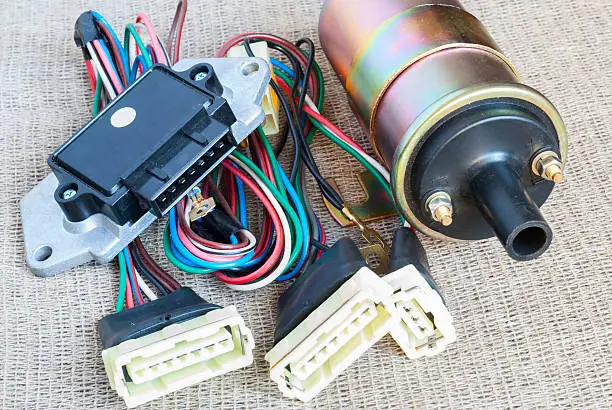An ignition coil is a crucial component of a vehicle’s ignition system, responsible for converting the battery’s low voltage into the high voltage needed to ignite the fuel-air mixture in the engine. If your car is misfiring, struggling to start, or experiencing poor fuel efficiency, a faulty ignition coil could be the cause. Here’s how to test ignition coil to determine if it needs replacement.
- Identify Symptoms of a Bad Ignition Coil
Before testing, check for signs that indicate a failing ignition coil:
- Engine misfires or rough idling
- Difficulty starting the engine
- Loss of power and acceleration issues
- Check engine light is on
- Poor fuel economy
If you notice these symptoms, it’s time to test the ignition coil.
- Perform a Visual Inspection
- Open the hood and locate the ignition coil. In most cars, it’s connected to the spark plugs via ignition wires or mounted directly on top of them.
- Look for cracks, burn marks, or corrosion on the coil housing and electrical connections.
- If you see damage or oil leakage, the coil may be faulty and should be replaced.
- Test for Spark Using a Spark Plug Tester
- Disconnect one of the ignition coil’s spark plug wires.
- Attach a spark plug tester to the coil’s output terminal.
- Start the engine and observe the tester.
- If a strong, visible spark is present, the coil is functioning properly. If there’s no spark or a weak spark, the coil may be faulty.
- Use a Multimeter to Check Resistance
A multimeter can measure the electrical resistance of the ignition coil to determine if it’s working correctly.
Step 1: Test the Primary Coil Resistance
- Set your multimeter to the ohms (Ω) setting.
- Connect the positive (red) lead of the multimeter to the coil’s positive terminal.
- Connect the negative (black) lead to the coil’s negative terminal.
- A good ignition coil should read 0.4 to 2 ohms (check your vehicle’s manual for the exact specification). If the reading is out of range or shows no continuity, the coil is bad.
Step 2: Test the Secondary Coil Resistance
- Place the red lead on the coil’s positive terminal.
- Place the black lead on the high-voltage terminal (where the spark plug wire connects).
- A good reading is typically between 6,000 to 12,000 ohms. If the reading is too high, too low, or infinite, the coil is likely faulty.
- Swap Coils for Further Testing (If Applicable)
In vehicles with multiple ignition coils, you can swap a suspected faulty coil with a working one.
- If the misfire or problem moves to the new cylinder, the coil is faulty.
- If the issue remains in the same cylinder, the problem may be elsewhere, such as the spark plug or ignition module.
- Consider Professional Diagnosis
If home testing is inconclusive, a mechanic can perform an oscilloscope test to check the coil’s performance under real operating conditions.
Also Read: How To Take Care Of Your Vagina After Giving Birth
Email your news TIPS to Editor@Kahawatungu.com — this is our only official communication channel


